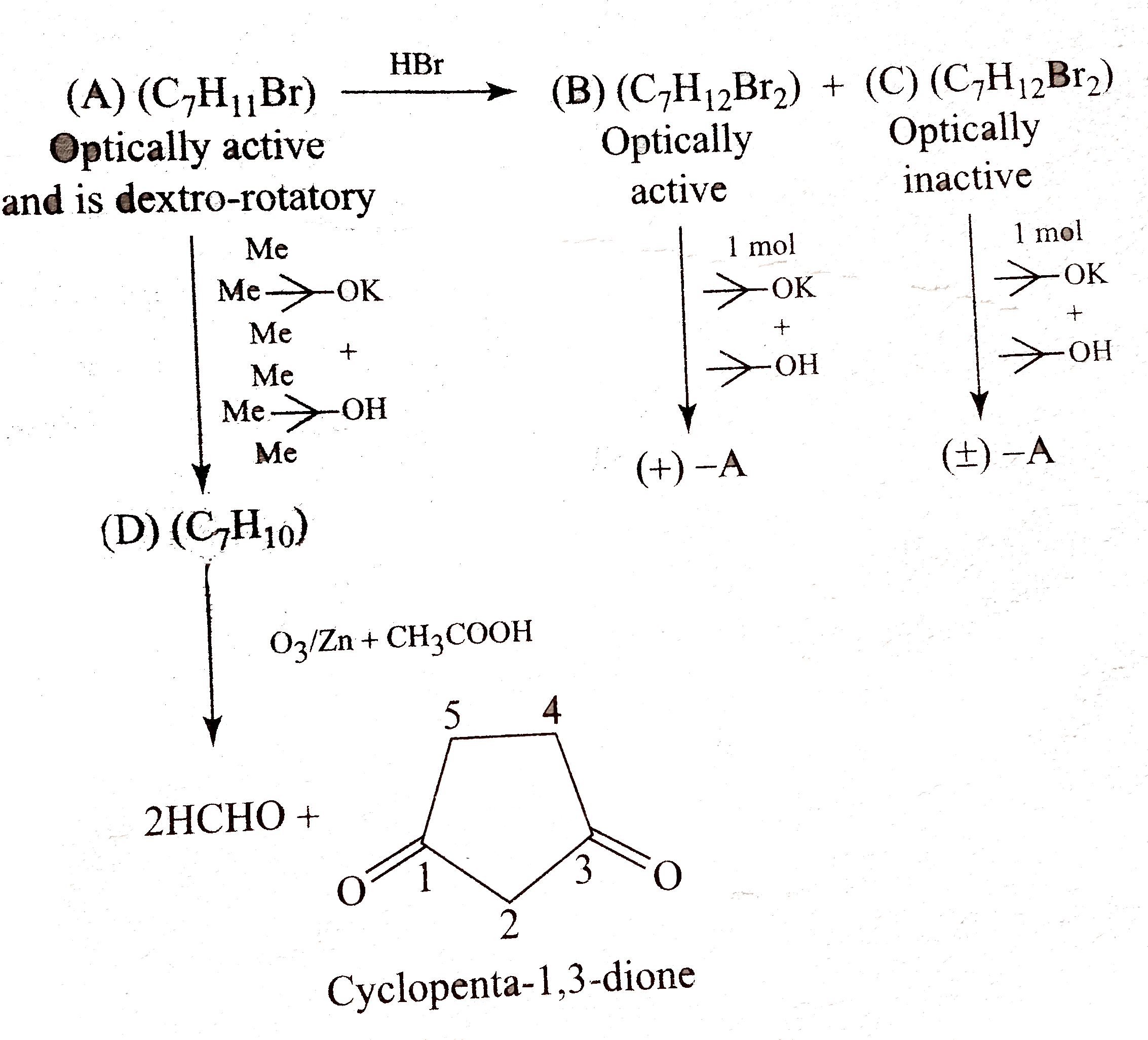Identify (A) to (E ) and also explain the reaction involved

A: Cu, B: Cu(NO3)2 C:[Cu(NH3)4]2+
D: CO2, E:CaCO3
CuCO3→CuO+CO2(D)
CuO+CuS→Cu(A)+SO2
Cu+4HNO3→Cu(NO3)2(B)+2NO+2H2O
Cu2++4NH3→[Cu(NH3)4]2+(C)(Blue solution)
CO2(D)+Ca(OH)2→CaCO3(Milky)+H2O
CaCO3+CO2+H2O→Ca(HCO3)2(Clear solution)
Topper's Solved these Questions
- THE D-AND F-BLOCK ELMENTSBOOK - KUMAR PRAKASHANCHAPTER - THE D-AND F-BLOCK ELMENTSEXERCISE - Section -E (Multiple Choice Question (MCQs))
69 Videos
- THE D-AND F-BLOCK ELMENTSBOOK - KUMAR PRAKASHANCHAPTER - THE D-AND F-BLOCK ELMENTSEXERCISE - Section -E (MCQs Asked in Comprtitive Exam)
51 Videos
- THE D-AND F-BLOCK ELMENTSBOOK - KUMAR PRAKASHANCHAPTER - THE D-AND F-BLOCK ELMENTSEXERCISE - Section D (Assertion and Reason Type)
5 Videos
- SURFACE CHEMISTRYBOOK - KUMAR PRAKASHANCHAPTER - SURFACE CHEMISTRYEXERCISE - SECTION - E (MCQs asked in GUJCET/Board Exams)
52 Videos
- THE P-BLOCK ELEMENTS BOOK - KUMAR PRAKASHANCHAPTER - THE P-BLOCK ELEMENTS EXERCISE - SECTION-E (MULTIPLE CHOICE QUESTIONS (MCQS)) (MCQS ASKED IN BOARD EXAM)
77 Videos
Similar Questions
Identify A to E and explain the reactions involved.

View SolutionWhen an oxide of manganese (A) is fused with KOH in the presence of an oxidising agent and dissolved in water, it gives a dark green solution of compound (B). Compound (B) disproportionates in neutral or acidic (C ) oxidises potassium iodide solution to a compound (D) and compound (A) is also formed. Identify compounds A to D and also explain the reactions involved.
View SolutionWhen an oxide of manganese (A) is fused with KOH in the presence of an oxidising agent and dissolved in water, it gives a dark green solution of compound (B). Compound (B) disproportionates in neutral or acidic (C ) oxidises potassium iodide solution to a compound (D) and compound (A) is also formed. Identify compounds A to D and also explain the reactions involved.
View SolutionGive the stereochemical forculae for (A),(B)(C), and (D) and also give the reactions involved.

View SolutionGive the stereochemical forculae for (A),(B)(C), and (D) and also give the reactions involved.

View Solution(E) dissolves in aqueous solution of ammonia giving a colourless solution of (F). Identify (A) to (F) and give chemical equations for reactions involved in steps (i) to (v).
View SolutionName the reaction which is commonly used in the conversion of vegetable oil to fats. Explain the reaction involved in detail.
View SolutionName the reaction which is commonly used in the conversion of vegetable oil to fats. Explain the reaction involved in detail.
View SolutionName the acid formed by the reaction between SO2 gas and water . Also write the reaction involved.
View SolutionBlue-coloured gas X having a characteristic fishy odour, can restore the colour of lead paintings. This gas can also be used for sterilizing water. Identify the gas X. Mention the type of reaction(s) involved.
View Solution
